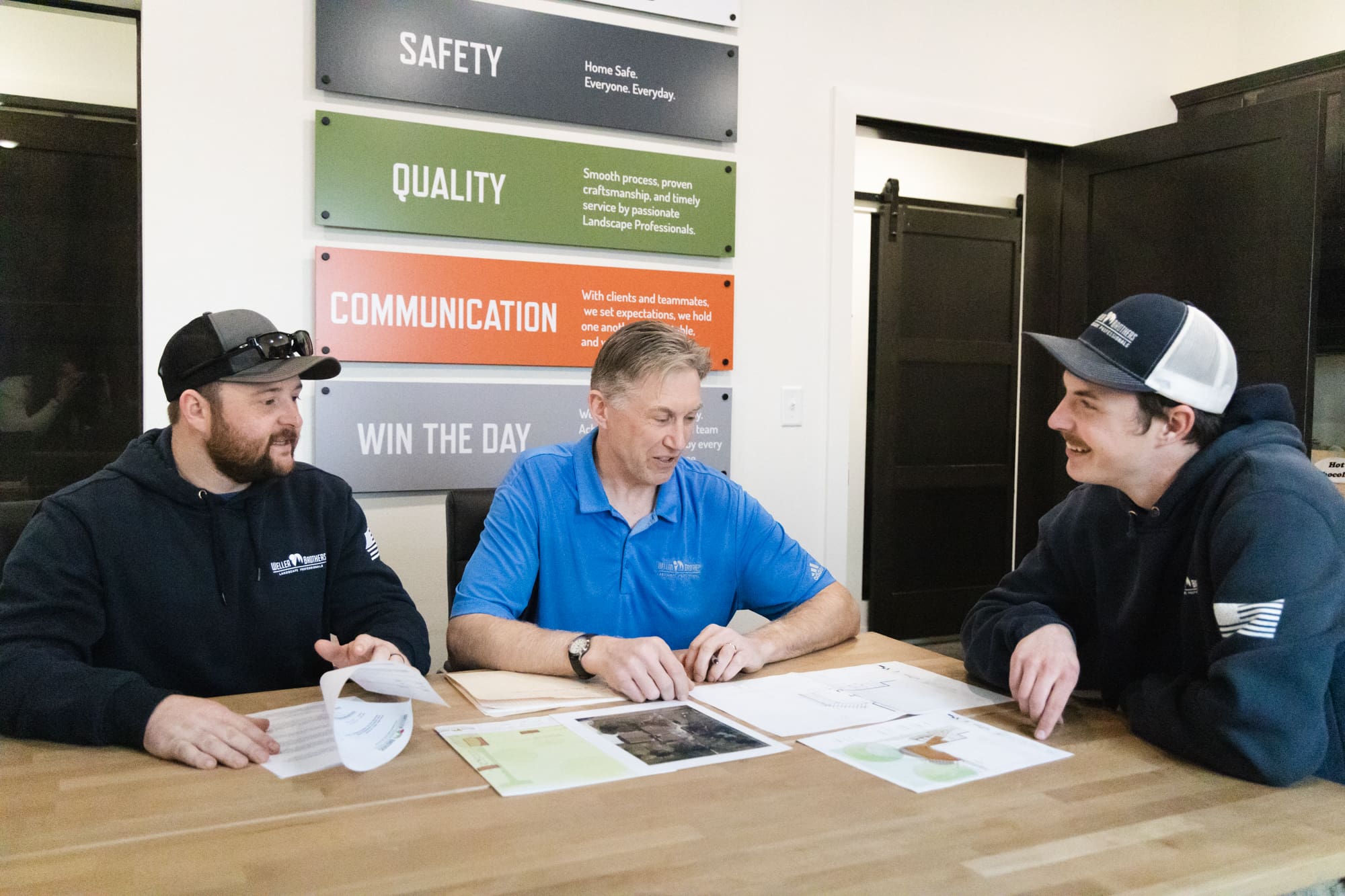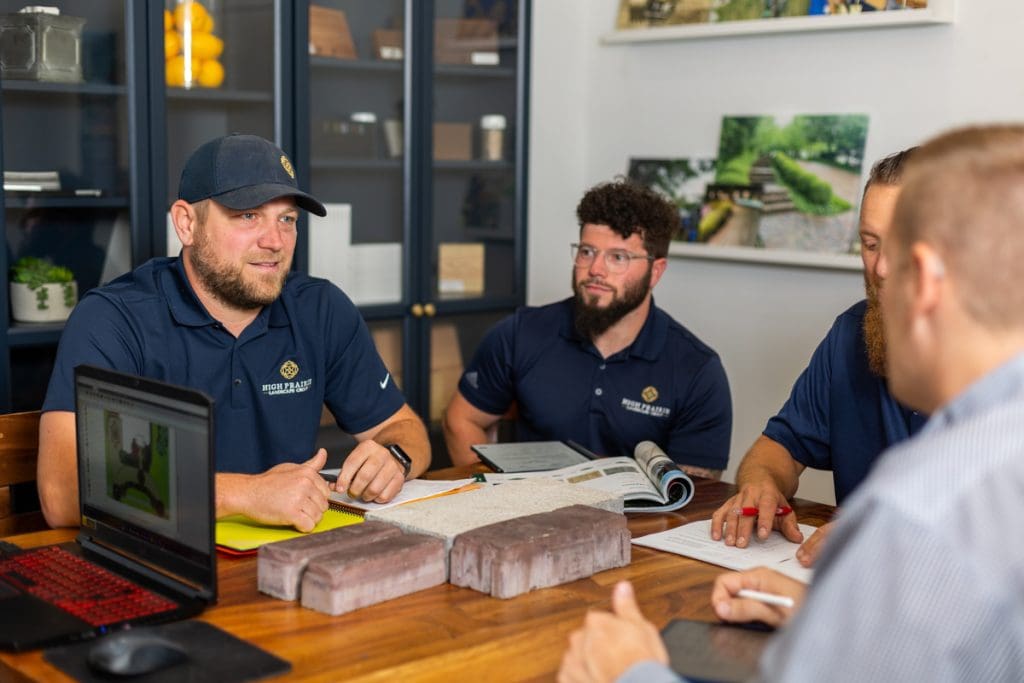
There are a lot of moving parts to a project handoff, so creating a process and using it consistently can help streamline this step and prevent oversights.
“Standardizing this process helps improve communication, expectations, and keeping on track with all project specifics to reduce the chance of scope creep,” says Michael Wagner, director of company operations for Designscapes Colorado, based in Centennial, Colorado. “Ensuring that all stakeholders of the project are on the same page throughout the entirety of the design/build process, it is important to build a culture of strong teamwork and communication to end at the highest quality and most productive result.”
What Needs to Be Provided
To make sure nothing is left out, Robyn Schmitz, owner and CEO of High Prairie Landscape Group, LLC, based in Edwardsville, Kansas, says they have a project meeting kickoff checklist that includes:
- Designs and design details
- Job planner forms: materials, labor summaries by scope, equipment needs
- Customer feedback form copies of the pre-install checklist (Parking, permissions, preferences, etc.)
- Electronic job profile introduction, including site photos and walk-through videos
- Any permitting and regulation details
Kamsi Gerry-Ofor, a landscape design sales associate for Live Green Landscape Associates, LLC, based in Reisterstown, Maryland, says your estimate on the number of hours, quantities and prices of materials, as well as receipts for any materials already purchased should be provided as well.
“The salesperson should have an accurate job planner and a scaled design outlining the scope of work to be completed,” Tyler Nelson, landscape production manager, for Weller Brothers Landscaping, based in Sioux Falls, South Dakota. “Jobs with specific features such as an outdoor kitchen, pergola, water feature, or fireplace should have their own plan with dimensions and pictures.”
Wagner adds that the sales/design team should also be receptive and open to feedback or suggestions that may alter parts of the project.
Who Should Be There
Who should be involved in your project handoff depends on the roles in your organization.
“In our organization, the designer and project manager meet,” Schmitz says. “Then, the project manager has a separate kick-off with the crew two weeks prior to the project start. At this point, the entire project plan and schedule have also been created. Yet, it still gives the crew lead the opportunity to provide feedback and ask questions.”
At Weller Brothers, the designer or salesperson, production manager, and foreman attend the project handoff. Gerry-Ofor says their designer, estimator, salesperson, project manager and production manager are present at their meetings.
“The attendees of a successful handoff team should be the sales/design personnel of the project, project management, crew foreman and lead roles, and in necessary settings, the department manager or safety/risk specialist should also attend,” Wagner says. “Sometimes the dependent attendees can fluctuate given the size or challenges of a project, but consider your resources within the organization that can make the project a success.”
Hosting Efficient Meetings
Meetings are often mocked as a waste of time that could have been an email. However, project handoffs have far too much information to be conveyed in that method. Schmitz suggests having a standing agenda and if side topics are introduced, they should be tabled for the end of the meeting or discussed at another meeting.

“When attendees create positive expectations given the fact that there is structure and efficiency to a meeting, attendees come less pre-disposed to challenging situations,” Wagner says. “You should always be respectful and communicative when navigating the schedules of others, but it is certainly helpful to send out an agenda at least three days before the meeting with key topics, as this will give attendees time to make notes or come prepared will the proper materials and information.”
To keep the meetings concise and efficient, checklists can also be used to keep these meetings on track and ensure everything has been covered. Nelson and Gerry-Ofor agree checklists can make sure no one forgets any items that need to be discussed.
Wagner adds it’s okay to hold more than one handoff meeting if issues or concerns arise.
“Don’t think that one meeting will suffice every time, but be adaptable and open to the fact that it may take time to develop the most positive and effective approach,” Wagner says.
Point of Contact for Clients
One question that can arise after a project handoff is who is the point of contact for the client now. This is another situation where it will vary based on your own operations’ organization.
At High Prairie, customers interact with their project liaison, who is both on the design and production team, so they are fully aware of all the aspects. Schmitz adds the questions are documented in their portal and the entire team can engage as needed.
Nelson says at Weller Brothers, the foreman maintains regular communication with the client.
“If there are conflicting expectations regarding the job’s progress, the foreman, production manager and designer will meet,” Nelson says. “Following that meeting, the salesperson will reach out to the client and discuss the job progress and expectations for the remainder of the project.”
At Live Green, they opt to maintain one main point of contact throughout the process to avoid unnecessary “he said, she said” situations, but if the designer/salesperson is unavailable, their project manager is well informed to answer client questions. Gerry-Ofor says they also track these questions and responses so the whole team can see.
“It is helpful to build a relationship with the client to where they feel comfortable asking either the project manager or the sales/design team about progress,” Wagner says. “Also, if the relationship is fostered in a positive manner, you may even see the client communicating with the project foreman or other members of the production team. What you have to remember is that communication is one of the most vital components of a successful handoff, project, and client relationship, and if all stakeholders communicate regularly, there is less of an opportunity for conflict, mistakes, or misinformation.”

